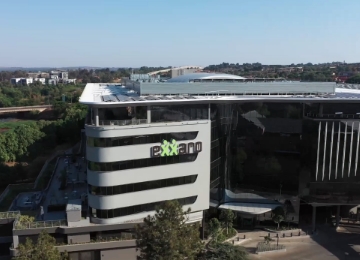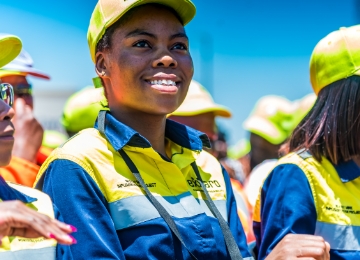THE GROOTEGELUK MINE COMPRISES A COMBINATION OF THE TWO TYPES OF COAL DEPOSITS, THE OVERLYING VOLKSRUST FORMATION (THICK INTERBEDDED SEAM COAL DEPOSIT), AS WELL AS THE UNDERLYING VRYHEID FORMATION (MULTIPLE SEAM COAL DEPOSIT).
Comparison of interpretation before (above) and after (below) the short-term model
The Volksrust formation comprising intercalated mudstone or carbonaceous shale and bright coal layers requires detailed coal sample and mining horizon management to ensure correct RoM coal quality feed to the various coal processing plants. Grootegeluk implemented a short-term geological model to assist in optimising its day-to-day resource exploitation and short-term mine planning activities. Unlike the long-term geological model used for resource estimation and reporting, the short-term model is coal sample-based and updated weekly with new information obtained from geophysically logged blast holes, as well as surveyed floor surfaces in the pit. Blast holes are closely spaced (approximately 7.5m), which allows for densely spaced geological points of observation resulting in greater estimation accuracy than the long-term model, which typically uses exploration cored boreholes approximately 350m apart. The integrated model is applied to account for day-to-day material losses and/or gains as a result of under or over-mining of the benches. By ensuring that these mining deviations are accounted for in the tonnage and quality compositing of the mining blocks, block estimates are greatly improved in the short term. The short-term model has proved to be a valuable tool, assisting the operation in ensuring timely and accurate as-mined block estimates, as well as identification of geological risks within the mining blocks.


